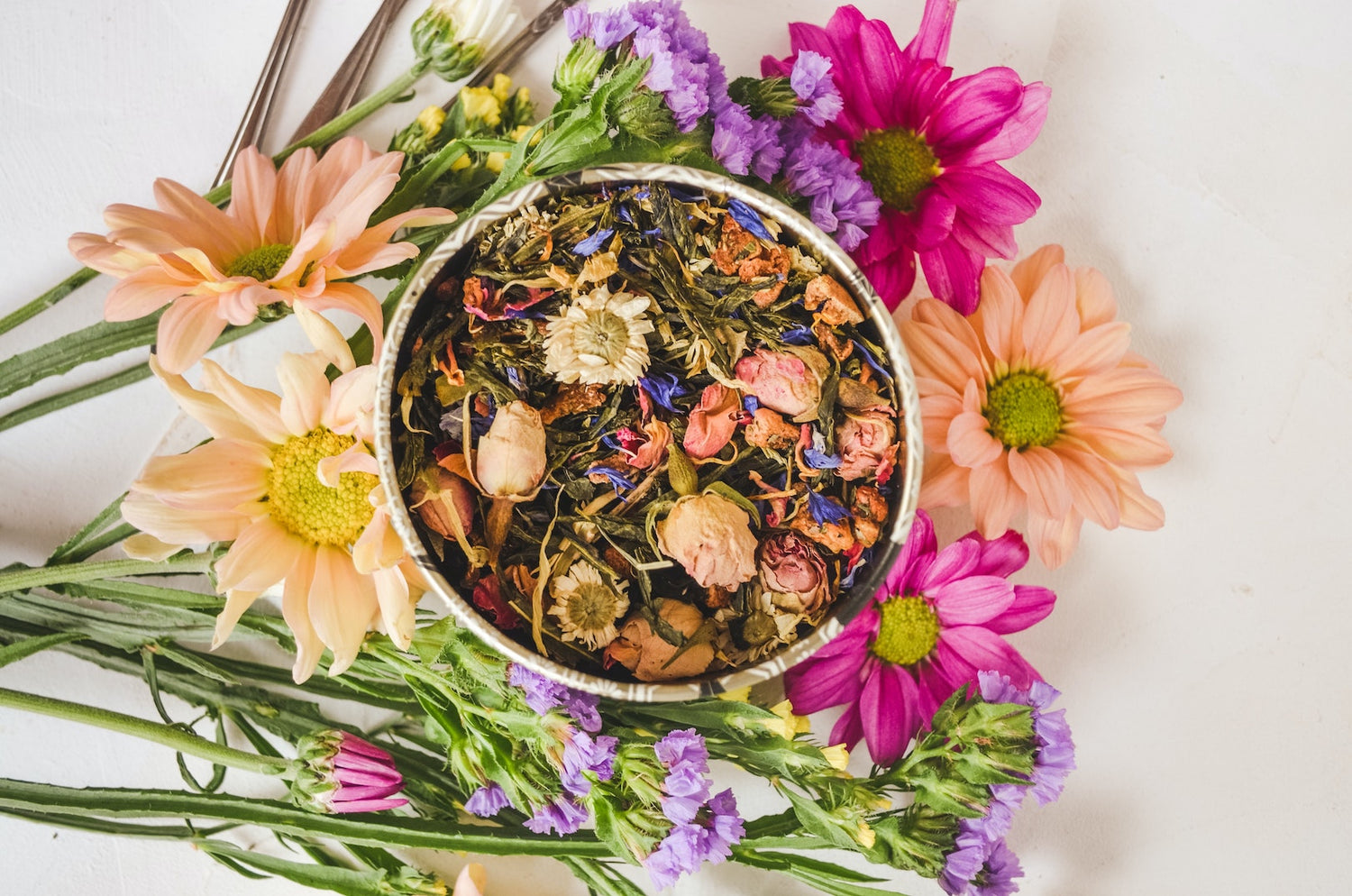You might not realize it, but you’ve been enjoying terpenes for a long time, even if you’ve never heard of them until recently.
Anytime you breathe in the fresh smell of the outdoors, the soothing aroma of essential oils, or the sting of a lemony cleaning product, you’re actually inhaling tiny, delicious compounds courtesy of Mother Nature. These compounds are called terpenes, and they’re basically everywhere.
Keep reading to learn everything you need to know about terpenes, and access our terpene chart.

What Are Terpenes?
Terpenes are what give plants their smell, and they play a role in plants’ flavor and pigment. They’re the primary component of plants’ essential oils, and they’re the largest and most diverse group of naturally occurring compounds on the planet. (You can even find certain ones in some animals.)
Sometimes referred to as “terps,” they’re known as volatile organic compounds (VOCs), which are defined as having a high vapor pressure and a low boiling point. Simply put, they tend to exist as gases in the air.[1]
Thanks to psychoactive flower becoming legal and more mainstream, terpenes are one of the latest health and wellness trends.
Research is ongoing into their potential health benefits, but the terp trend is likely here to stay as evidence suggests these aromatic compounds could impart some serious therapeutic benefits, even outside of that medicinal skunky plant.

Most Common Terpenes
As far as we know, there are tens of thousands of different terpenes found in nature, but some are more prevalent than others. Check out the terpene chart at the end of this blog for a more complete list of terpenes with details, but here’s a basic summary of the most common terpenes.
-
Pinene: The most common terpene in nature, pinene is responsible for the scent of conifer trees, herbs like rosemary, dill, and basil, and hundreds of other plants. As the name suggests, it smells like pine.[2]
- Limonene: Another super prevalent terpene, limonene provides oranges, lemons, limes, and other fruits their citrusy scent. You can also find it in plants like juniper, and it’s used in many perfumes and cleaning products.[3]
- Linalool: You’ll recognize this terp as one of the most popular ones in aromatherapy. Linalool is responsible for the calming scent of lavender. You can also find it in over 200 other plants including birch bark.[4]
- Myrcene: This terp is the most common one in commercial psychoactive flower today. It has a peppery, spicy, balsam-like scent that you’ll find in plants like hops, thyme, lemongrass, and mango, among others.[5]
- Beta-caryophyllene: This is a spicy terpene found in herbs like black pepper, cloves, hops, rosemary, copaiba, and over 1,000 other plants.[6]
How Do Terpenes Affect the Body?
With so many terpenes on the planet, we’re not yet sure how each of them may or may not affect the body. The most common ones do have some research behind them, although most need more evidence before substantial claims can be made.
Pinene, for example, appears to have antimicrobial, anticancer, anti-inflammatory, and antiallergic properties.
But as of the latest research, most studies around pinene haven’t been done in the human body, so more evidence is needed to confirm if it can impart those effects on us.[7]
Limonene has a bit more research behind it, having been used clinically to dissolve cholesterol-containing gallstones and relieve heartburn.
It’s also demonstrated the potential to delay the development of some cancers, but that hasn’t been fully proven yet.[8]

Some plants with linalool were used in traditional medicine as a sedative and anti-epileptic.
Rodent studies have shown the terp itself may reduce anxiety and depression, which is why linalool-containing lavender is often touted in aromatherapy as a calming scent.[4]
The terpene myrcene has faced a lot of scientific scrutinies and its potential benefits are hotly debated.
However, it has demonstrated some analgesic, sedative, antidiabetic, antioxidant, anti-inflammatory, antibacterial, and anticancer effects, though more research is needed.[9]
Perhaps the most interesting terpene is beta-caryophyllene.
This terp has the ability to stimulate our Endocannabinoid System (ECS), which is normally only done by another natural compound known as a cannabinoid. This makes it uniquely beneficial because our ECS is responsible for maintaining balance within the body, so stimulating it can help to keep everything in line. Beta-caryophyllene has also demonstrated benefits for colitis, osteoarthritis, and diabetes, but research is ongoing.[6]
Terpene Breakdown + Terpene Chart
If there’s one thing you should take away from this blog, it’s that terpenes are found nearly everywhere in nature, not just in psychoactive flower. Open your pantry, pull out your produce drawer, and peek into your fruit bowl, because those dried herbs, leafy greens, and sweet treats may have even more benefits to offer you and your body than you know.
Explore our terpene chart below for other terps and their potential benefits and to get an idea of what terpenes you may want to increase in your diet. And if you find some that you’re not sure how to add because you don’t eat a lot of the plants that contain it, consider making a terpene-infused oil with your LEVO to use in cooking. Because increasing your limonene and pinene intake could mean enjoying some delicious Infused Shortbread Bars.

Terpene Chart
| Aroma | Effects | Also found in | Boiling Point | |
| Limonene | Lemon Citrus Orange |
Energizing Anti-Inflammatory Anti-Stress |
Peppermint Citrus Fruit Rinds Juniper |
348.8°F |
| Myrcene | Earthy Herby Cloves |
Sedative Antioxidant Anti-Inflammatory |
Mango Lemongrass Bay Leaves |
332.6°F |
| Linalool | Citrus Sweet Floral |
Anti-Inflammatory Pain Relief Sedative |
Sweet Basil Mint Lavender |
388.4 °F |
| Pinene | Pine Mountain Air Wood |
Pain Relief Relaxation Anti-Anxiety |
Oregano Dill Pine Nuts |
311°F |
| Caryophyllene | Spicy Pepper Wood |
Anti-Inflammatory Antioxidant Anti-Anxiety |
Black Pepper Cloves Oregano |
473.54 °F |
SOURCES

























Leave a comment
All comments are moderated before being published.
This site is protected by hCaptcha and the hCaptcha Privacy Policy and Terms of Service apply.